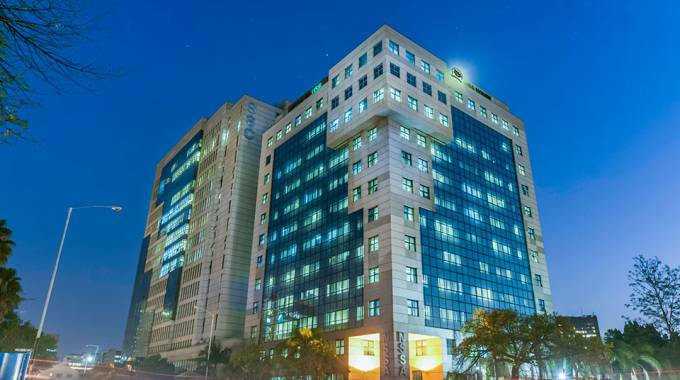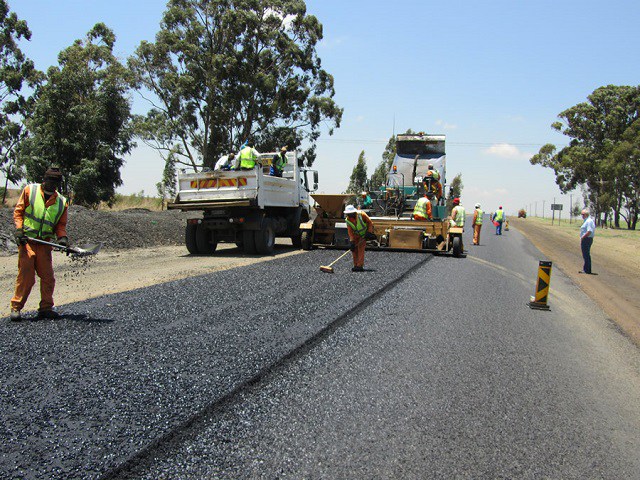NDS1 focuses on key infrastructure
The National Development Strategy 1 (NDS1), the Government’s five-year economic management master plan through to year 2025, will focus on building, expanding and restoring key enabler infrastructure.
This comes as the Government puts in an extra shift to close the infrastructure gap, which could not be done over the past two decades due to financial constraints emanating from prolonged economic challenges.
This was said by Ministry of Finance and Economic Development economist Ngonidzashe Munoda on Monday while presenting the many successful interventions by the Government in the last two years in the area of infrastructure.
Mr Munoda, speaking in Gweru on the ongoing and planned key infrastructure and digital economy interventions by the Government during the NDS1 period, said difficulties in ensuring continuous rehabilitation, maintenance and expansion had affected the quality of infrastructure in critical areas.
“This will involve restoration of basic infrastructure services such as roads and expansion in critical areas mainly targeting key sectors of energy, transport, water and sanitation, Information and Communication Technology and Housing,” he said.
Addressing the same gathering, Information, Publicity and Broadcasting Services Minister Senator Monica Mutsvangwa implored the media, regardless of media stable to objectively inform the public on NDS1 and a nation on turnaround.
Initiatives targeted under the five year development plan will build on the success stories of the Transitional Stabilisation Programme, which has laid a strong foundation for sustainable economic growth going forward.
Among the key achievements of the TSP were elimination of the twin deficits; current account imbalance and budget overruns, restoration of local currency, exchange rate stability, putting inflation under control, investment in key enablers, doing business reforms and the ongoing global re-engagement.
Government contends that the quality of infrastructure is a measure of the quality of life of the citizens in a country, while the amount of a nation’s infrastructure has an important bearing on sustainable long-term economic growth.
The past two decades have been marred by economic challenges, which led to difficulties in ensuring the continuous rehabilitation and maintenance of critical infrastructure including expansion in the critical areas.
The lack of fresh investment has resulted in Zimbabwe being ranked number 127 out of 138 countries in the Infrastructure Index under the 2017-2018 World Economic Forum Global Competitiveness Report.
Causes of poor infrastructure over the past 20 years include inadequate levels of public expenditure for routine and periodic maintenance, chiefly, lack of maintenance and rehabilitation of the infrastructure networks;
There has also been a lack of an integrated approach in infrastructure investment planning compounded by substantial loss of skills, lack of progress in building institutional capacities for management and regulation of the basic services.
Further, key infrastructure has been afflicted by low investment by both public and private sectors, inadequate funding for capital and operating expenditure due to low levels of support from development partners due to arrears.
During the NDS1, efficient infrastructure delivery will be key in the realisation of national priorities, including having a positive impact on overall socio-economic development and lowering the cost of doing business.
The interventions will involve restoration of basic infrastructure services such as roads and expansion in critical areas mainly targeting key sectors of energy, transport, water and sanitation, ICT infrastructure. Targeted infrastructure outcomes will be underpinned by clearly defined and realistic sector strategies and interventions, including performance indicators geared towards ensuring restoration of basic infrastructure.
During the NDS1 Period, the target is to increase power supply from the current installed capacity of 2317 megawatts (MW) to 3467MW by2025 and construction of additional 280kilmetres of transmission and distribution network.
Targeted projects and programmes include renewable energy policy, clean energy access, rural electrification programme underpinned by expanded rural electrification and electricity end-use, fuel supply and strategic reserve management, replacement and upgrading of transformer capacity and institutional capacity building.
NDS1 will target to increase the number of kilometres of road network converted to meet Southern Africa Transport and Communications Commission (SATCC) standards from 5 percent to 10 percent by 2025 and to increase the number of kilometres of road network in good condition from 14 702km to 24500km by 2025.
In terms of the national rail system, the target under the five year development plan is to increase the proportion of track meeting set standards (Track Quality Index) from 57 percent in 2020 to 68 percent by 2025.-herald.cl.zw











